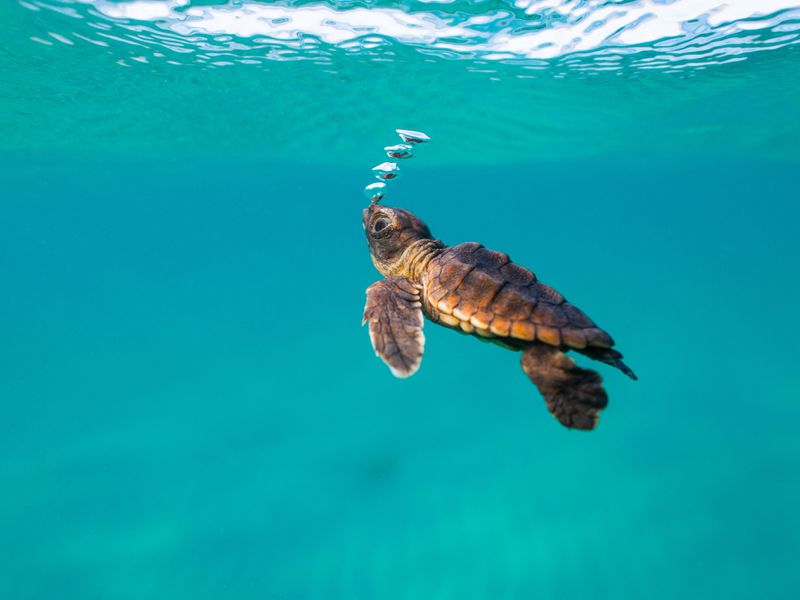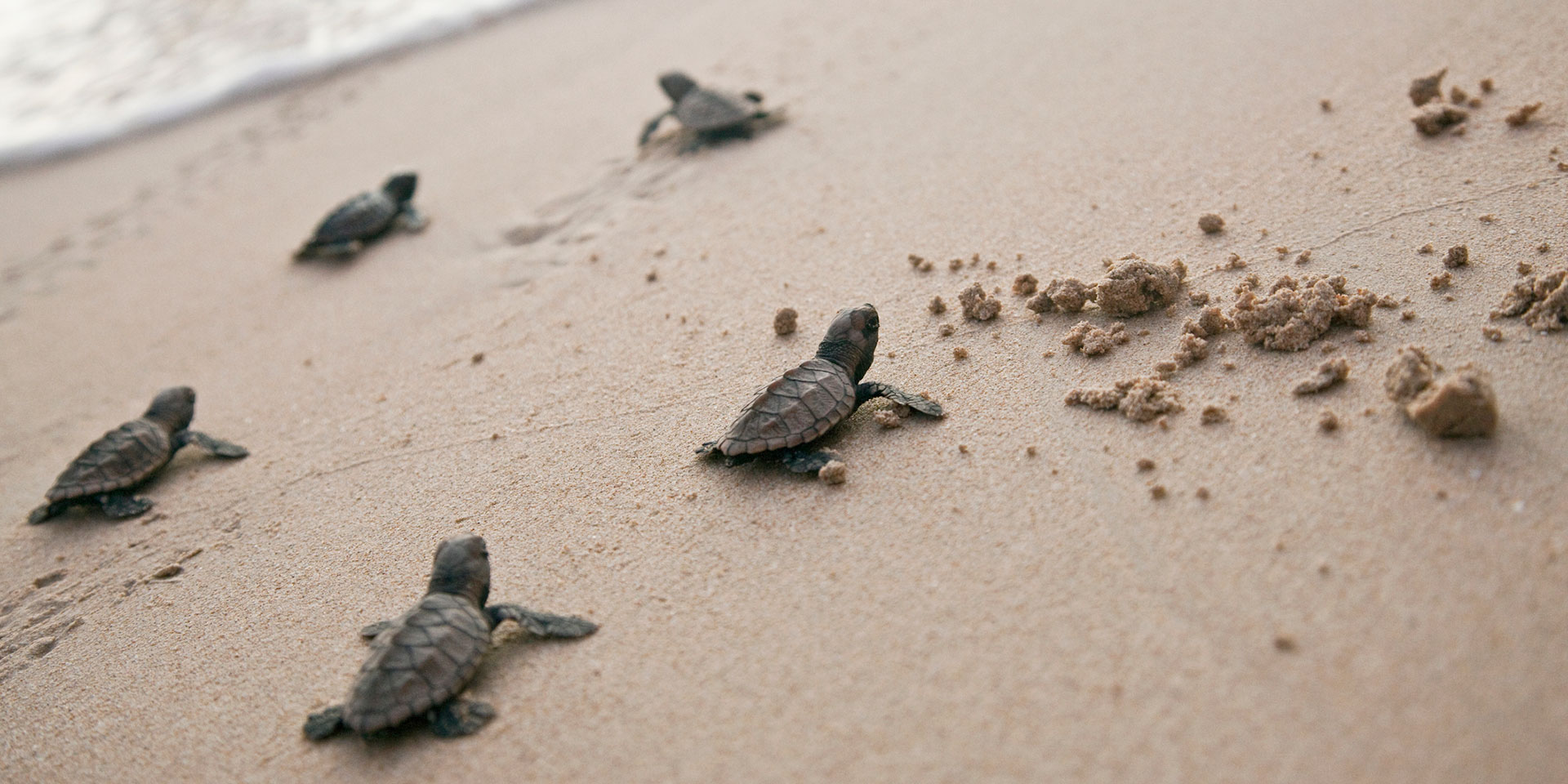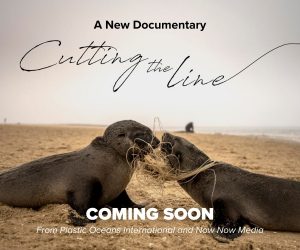How Do They Find Their Way Back?
It has been known for some time now that sea turtles return to the same beach they were born on to lay their own eggs. However, it wasn’t until recently that the how was discovered.
Extensive research over the last few years – in particular from the University of North Carolina – has shown that sea turtles use 3 sets of cues for orientation throughout their lives. As hatchlings emerge from their nests, hidden snuggly under the warm sand, they hurry towards the sea, following the reflection of the moon on the surface of the water. This is known as a visual cue, the very first they’ll follow. Once they reach the surf, they start swimming inward, this time following cue number 2 – motion sensitivity. This enables them to respond to the up and down movements of the waves, determining the direction of the oncoming water and swimming in the opposite direction. They can rely on this “wave compass” for about 30 minutes, whilst in shallower waters, because there waves are turned by bottom friction and always approach the shore parallel to the coastline. Once they enter the deep open ocean, however, they switch to their third and final cue, and perhaps the most amazing of them all: the earth’s magnetic field, which plays the role of compass for the remainder of their life.
CLICK HERE TO SUPPORT SEA TURTLE CONSERVATION EFFORTS

A juvenile sea turtle.
Magnetic cues are not only used by newly hatched turtles to find their way to oceanic nursery sites, where they spend several years growing, but also for juvenile and adult turtles of most species to return to coastal habitats, like reefs or mangroves, where food is more abundant and growth is faster and healthier. Magnetic cues are also the tool that helps female turtles find their way to their natal beach when they are ready to lay their own eggs.
A new study by J. Roger Brothers and K. Lohmann suggests that sea turtles learn their home beach’s distinctive magnetic signature upon birth through geomagnetic imprinting. They are capable of detecting the inclination angle of the magnetic field lines that intersect the Earth’s surface, which varies predictably with latitude, as well as detecting the strength and intensity of the Earth’s field. Simply put, this means they can tell which way is north and which is south, as well as where exactly they are in relation to the poles. And their “magnetic compass” is so precise that not only do nesting females return to the beach of their birth, but each year they return within a few hundred yards of where they last nested.

A mad dash to the ocean.
In addition, nesting females choose the spot on which they lay their eggs based on factors determining the successful return to the ocean of their future offspring. And the reason they return to the same beach they were born on is, well… if it worked for them, it should work for their babies too. However, turtles don’t reach reproductive maturity for 20 years and a lot can change in that time. Previously empty stretches of coastlines get overtaken by beach resorts, thousands of pieces of litter end up washed up on shore or buried in the sand, city infrastructures move closer and closer to the water, with bright blinking lights day and night. Each of these poses a threat to the successful return of hatchlings into the ocean and plays a significant role in the decision made by nesting turtles. The unsatisfactory conditions force mothers to look for new nesting grounds, changing century old behaviors and depriving local communities from witnessing the captivating spectacle of baby turtles scurrying to the sea.
Fortunately, the displacement of sea turtles is not irreversible. All over the world local communities and NGOs have been coming together to clean beaches, change lights with turtle-friendly ones and protect areas where turtles nest. Here on these pages, for instance, there has been one particular case study focused on the collaboration between Yuumtsil Kǻak Nǻab, Ninth Wave Mexico and Plastic Oceans, a team working together to just such an end.
Bel Georgieva is a Bulgarian-born, world-bred environmentalist and explorer, writing about conservation and sustainable, Earth-focused travel and lifestyle.
You can find her on www.sustainabel.com
CLICK HERE TO LEARN MORE AND/OR TO DONATE TO THE CAMPECHE TURTLE PROJECT.

